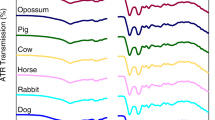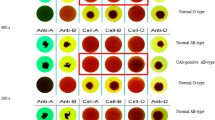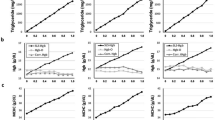Abstract
IF the haptoglobin groups in human serum, detected first in 1959 by Smithies1–3 using starch-gel electrophoresis, could be detected in stains of whole blood this would yield a useful means of grouping bloodstains in addition to the usual ABO system and, therefore, give a greater possibility of identification or exclusion. I have found that this is possible using the technique described here.
This is a preview of subscription content, access via your institution
Access options
Subscribe to this journal
Receive 51 print issues and online access
$199.00 per year
only $3.90 per issue
Buy this article
- Purchase on Springer Link
- Instant access to full article PDF
Prices may be subject to local taxes which are calculated during checkout
Similar content being viewed by others
References
Smithies, O., Biochem. J., 61, 629 (1955).
Smithies, O., Nature, 175, 307 (1955).
Smithies, O., and Walker, M. F., Nature, 176, 1265 (1955).
Poulik, M. D., Nature, 180, 1477 (1957).
Author information
Authors and Affiliations
Rights and permissions
About this article
Cite this article
CULLIFORD, B. Haptoglobins and Transferrins in Forensic Bloodstains. Nature 198, 796–797 (1963). https://doi.org/10.1038/198796b0
Issue Date:
DOI: https://doi.org/10.1038/198796b0
This article is cited by
Comments
By submitting a comment you agree to abide by our Terms and Community Guidelines. If you find something abusive or that does not comply with our terms or guidelines please flag it as inappropriate.



